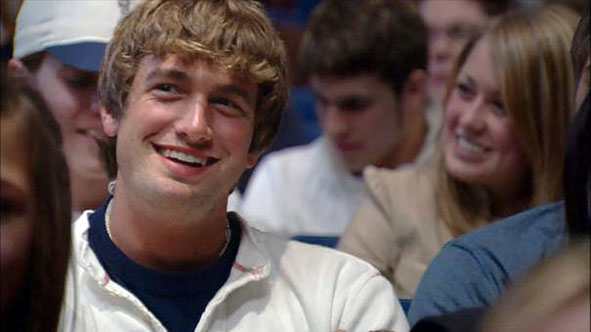This fictional documentary, filmed by a group of students who have been asked by their film studies teacher to film the reactions and grievingness of pupils. This is intended to be shown at his memorial service as a tribute to Ben. The students intend to interview, friends, staff, students and family. It begins with a sudden teenage death of a bright, popular athletic, handsome fellow student who has died in a car crash.
During Charlotte’s interview, it is revealed that Ben has been taking ADHD medication and buying it off a student who has got this condition. We find this out when a text is sent around all the students by an anonymous individual and Charlotte receives it. At first she is confused and then this turns to anger as she realizes he was all fake. He wasn’t who everyone thought he was. Her reaction shows a great deal about who she is and also gives us an insight into why he had taken the drugs as there is so much pressure.
Everyone is very shocked and confused. People want to know why he would take these drugs and what made him do it. So the documentarists decide to take a different approach and investigate the issues Ben was facing in which forced him to take the drugs. While interviewing people they all mention his brother and how naturally talented and great he was and how much Ben looked up to him. While interviewing his best friend, Tom, we find out he knew and that he was very worried about him. He starts to blame himself for the death of Ben and this is when it is revealed that he knew all along.
Now that everyone knows, the documentary makers feel it a good idea to show the consequences of taking un prescribed drugs. We interview Doctor Trenkil who has a PDHD in medicine.
Ben’s personal tutor talks of how Ben wanted to go and do a sport course at a college nearby instead of studying academics. This was not allowed as his parents and the head teacher thought it best he applied to Oxbridge and study something he wasn’t interested in, like his older brother had done. He had a lot of pressure and this is shown throughout the documentary.
The film makers take the documentary to both the parents and the teachers including the head master and we see the reactions of these people and they can learn from what they did wrong.








